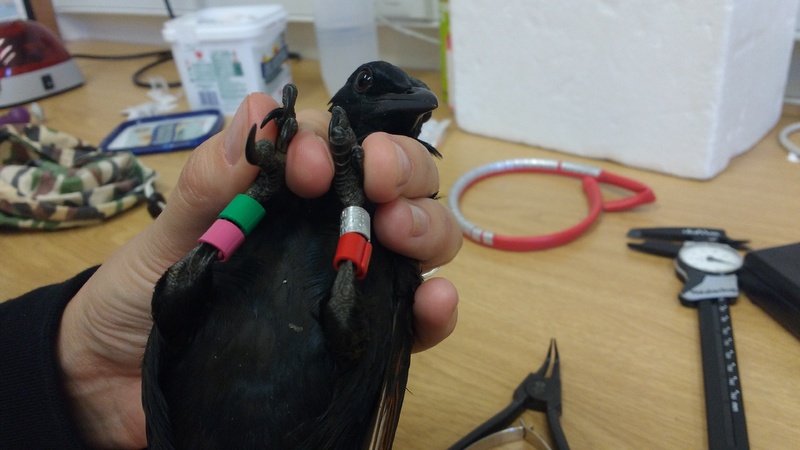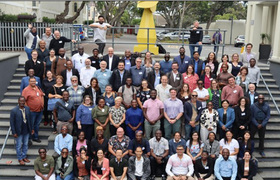Red-winged Starling project
22 June 2017 | Story Jessleena Suri.
Anyone who has spent a bit of time at UCT will know about the (in)famous Red-winged Starlings on campus.
These birds have developed a reputation at the university for being sly lunch thieves – many students can tell stories about starlings swooping past their heads on Jammie plaza in pursuit of a sandwich or some other treat. The FitzPatrick Institute of African Ornithology is now doing research on our favourite campus mascots, looking at how these city-slicking birds cope with highly variable food quality and quantity in urban environments.
Red-winged Starlings (Onychognathus morio) are a classic example of a species that has adapted extremely well to increasingly urban spaces. While many species avoid urban areas because of regular disturbance, pollution, habitat transformation and other threats, some species have learned how to exploit cities to their advantage.
In their natural environment, Red-winged Starlings nest on cliffs in mountainous areas, but in cities they nest on buildings – artificial mimics of their natural nesting habitat. Similarly, while they would generally feed on fruit and insects, they have learned that cities offer rich opportunities for scavenging on human food. But what consequences do they face as a result of replacing a natural diet with this ‘junk food’?
This is one of the aims of the Fitztitute’s current research. Another is to see how these birds cope with the lack of food on campus over weekends and holidays. The researchers are also interested in how adaptable these birds are in terms of their ability to deal with Cape Town’s increasingly hot and dry weather.
Colour-ringing
The Red-winged Starling project is being led by Dr Arjun Amar, Dr Robert Thomson, Dr Susie Cunningham and Dr Petra Sumasgutner. Results from the study will feed into various honours and master’s projects and to joint students with Lund University, Sweden, as well as forming the baseline for the long-term study of this particular starling population.
In order to study their physiology and nutrition, researchers need to capture, colour-ring and get small blood samples from as many individuals as possible.* Colour-ringing the birds allows researchers to identify each unique individual, and repeated sightings of the same birds provides insight into their movement patterns and survival rates. And that’s where you come in!
The researchers are calling on UCT students and staff to get involved in the project by reporting all sightings of ringed birds on campus. You can also let them know if you find a starling that is injured or trapped in a building. To report sightings you can either post on the Facebook page or join the WhatsApp group (which you can join and leave as you please). Alternatively, you can report sightings through the SAFRING page.
All birds are ringed with three coloured plastic rings and one metal ring which contains a unique ID number. When reporting ring combinations, please take note of the following information – the colour over metal on the left leg, and the colour over colour on the right leg (see the top picture for an example of how to report ring combinations). Please also include your location and the time. Ideally, you should send your location to the WhatsApp group at the time, but if you cannot do it immediately then drop a pin on Google Maps and send those coordinates and the time of the sighting – keeping in mind that accuracy is all important for the research data.
And please spread the word – it only works if the researchers have as many people as possible keeping an eye out in different areas!
It’s also important for people to be aware of what the researchers are doing – if only to change a few minds and to show that these highly intelligent birds are more than just sandwich thieves.
Check out the project’s Facebook page for more information and updates.
* While it might appear to be stressful for the birds, the researchers are all experienced in handling birds and have the appropriate ethics approval to ensure that the birds experience minimal stress. The birds are released immediately afterwards.
 This work is licensed under a Creative Commons Attribution-NoDerivatives 4.0 International License.
This work is licensed under a Creative Commons Attribution-NoDerivatives 4.0 International License.
Please view the republishing articles page for more information.












